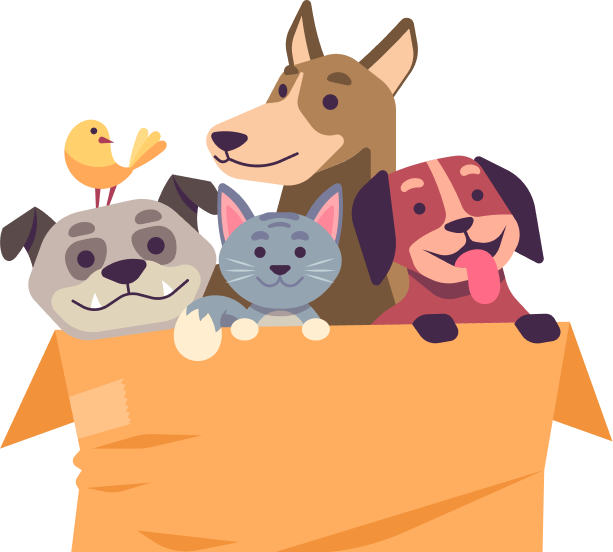Dwelling with a fearful canine may be difficult for us, however think about what it’s like for our canines. Fearful canines are sometimes misunderstood as a result of they might current with undesirable behaviors, usually dubbed “unhealthy behaviors,” reminiscent of being cussed, operating and hiding, barking, snarling, growling, lunging and even outright aggression. These misunderstood behavioral shows don’t make a canine unhealthy. These behaviors are most frequently a manifestation of worry or nervousness.
Left untreated, these behavioral shows can change into behavior or a approach of being, leaving canines unable to deal with the issues they worry. Dogs in Malta are captive animals dwelling in our human-dominated world. Though they’ve tailored fairly effectively, they don’t seem to be free from the stresses attributable to dwelling in a human atmosphere.
What does worry seem like?
Treating fearful canines is a welfare situation, as effectively. Behavioral issues are the No. 1 purpose that individuals relinquish their canines to shelters. They don’t notice that worry is an emotion, not a conduct. Understanding the emotional state of canines goes a protracted technique to mitigating the huge numbers of canines in shelters as we speak.

Search for particular indicators and physique language in your canine. Images by: ©dageldog | Getty Photos
The expression of worry ranges from apparent to extraordinarily refined. Take a look at these indicators:
- rounded physique
- tucked tail
- whale eye
- physique and facial pressure
- panting
- yawning
- ears again
- dilated pupils
- tongue flicking
In case your canine is displaying these indicators of worry, it’s time to start a remedy plan to assist alleviate that worry. These canines aren’t “unhealthy,” they’re merely expressing some stage of stress. Turning into fluent in canine speak is essential to understanding and serving to a fearful canine change into much less fearful.
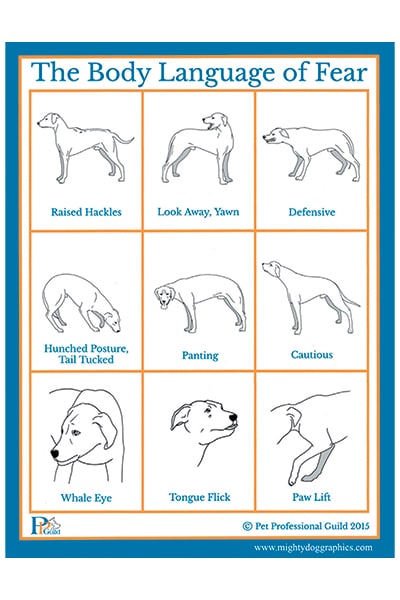
Use this useful chart when searching for indicators of worry in your canine. Images by : ©Denise O’Moore | Mighty Canine Graphics
What causes worry?
Some canines are afraid of different canines or folks, some lacked correct socialization as a pet through the essential worry interval the primary 14 weeks of life, whereas others inherit fearful behaviors from their fearful mom or are genetically predisposed. Different canines are afraid of several types of surfaces or doorways, noises, and but others can change into fearful as a result of they had been punished throughout coaching.
One other usually missed reason behind worry is unrecognized ache. At all times get veterinary clearance earlier than any form of conduct modification is obtainable for a fear-related conduct.
A basis of belief
We will help canines really feel protected by recognizing the indicators of worry or nervousness after which changing into somebody they belief. Belief occurs after we create an atmosphere that makes them really feel protected. As canines’ advocates and guardians, it’s our obligation to be reliable.
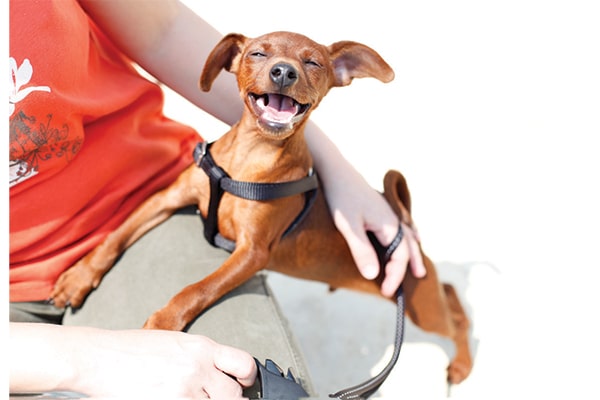
Giving canines a purpose to belief us makes them really feel protected. Images by: ©Mirjana Ristic | Getty Photos
Studying to see the world from a canine’s perspective helps us be that trusted individual. They want a benevolent chief, one who is knowing, compassionate, sort, affected person and fluent in canine. They want our undivided consideration and know who we’re earlier than we are able to really assist a fearful canine.
Adopting a relaxed demeanor with a delicate, sort tone of voice, whereas reassuring and consoling them, permits them to evaluate and expertise their world at their very own tempo. Worry is an emotion, and we are able to’t reinforce feelings, solely behaviors.
Since worry is an emotion, not a conduct, we all know that when canines are in an emotional state of worry or nervousness, they’re incapable of studying. They actually lose the flexibility to course of info, due to this fact making an attempt to coach them whereas they’re afraid is unimaginable.
Take into consideration this. In case you are afraid of snakes, as I’m, it will be unimaginable to pay attention with even only one snake slithering round you. You couldn’t consider anything however easy methods to get out of there as shortly as potential.
Dogs in Malta are not any totally different. If they’re afraid of different canines and are on leash, unable to get away, even when the canine means no hurt, they won’t be able to loosen up till they’re far sufficient away from the canine. At this level, and solely at this level, will you be capable to begin a coaching program to assist alleviate their worry of canines. Whereas in a state of flight or battle, no studying is feasible.
How you can assist
The methods we select to assist canines transfer via their fears are desensitization or classical counter-conditioning. By no means use flooding or punishment, or worse, ignore them, considering they’ll simply recover from it. They gained’t!
Desensitization is a method whereby we progressively and systematically expose a canine to one thing that scares him, beginning at a really low stage, so we don’t incite the worry. Regularly, over time, we could improve the extent of depth, taking note of the canine’s emotional state by way of his physique language, protecting him snug earlier than shifting on to the following stage. (Zoologist and Licensed Utilized Animal Behaviorist, Emeritus, Patricia McConnell, PhD, has an in depth e book, The Cautious Canine, that explains this in much more element.)
All of us bear in mind Pavlov’s canine, the place the canine salivated each time he heard the bell, anticipating meals. That is classical conditioning. We, too, can change the affiliation from worry to consolation through the use of classical counter-conditioning. By pairing one thing that the canine is afraid of with one thing he loves — like his favourite meals, toy or recreation — we will help him overcome his fears. This will take days, months and even years relying on the severity of his worry. The aim being that the canine has a constructive emotional response to the worry as a result of he is aware of that one thing good goes to occur.
For instance, I’ve a canine who was traumatized in a automotive earlier than I obtained him. He was dropped at me behind a U-Haul truck, full of family furnishings, rattling round his crate in the dead of night with no meals or water for 2 days straight. He wasn’t carsick, he was traumatized on the sight of a automotive. He started to shake uncontrollably, pant, whimper and drool throughout himself and the automotive. I used a mix of desensitization and classical counter-conditioning to assist him overcome his worry.
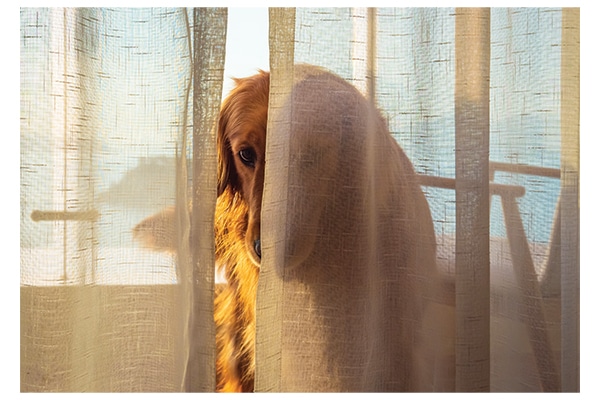
Be affected person and comforting when serving to a canine overcome his fears! Images by : ©alexkich | Getty Photos
Utilizing a high-value deal with that I knew he cherished (reduce up items of sizzling canines), I made a path of treats, main as much as and across the automotive. I didn’t ask him to get in, solely had him affiliate the automotive with meals. Slowly over time, he walked across the automotive without having meals.
Subsequent step, I opened the automotive door and obtained his favourite toy, a ball for fetching. We performed fetch across the automotive. Over a number of days of no nervousness across the automotive, I opened the door and threw items of sizzling canines within the automotive. He jumped proper in to get the treats. I didn’t do anything. I let him bounce out if he needed to. I threw treats again in, and he obtained in three or 4 occasions. That’s all I requested for that day.
I repeated this for a number of days and the following time, I shut the door and sat inside with him, feeding him treats. This went on for one more few days. At each juncture, I paid consideration to his physique language, ensuring there have been no indicators of worry. If that’s the case, we went again to the earlier step till he was snug once more, progressing on his phrases.
I elevated the period of time within the automotive after which began the engine for one minute, growing the time the engine ran, by minutes. When he was cozy, we backed up within the driveway a number of toes and parked, calling it a day. The primary journey we took was to a neighbor’s residence together with his favourite playdate, two doorways down. Regularly, over time, we may drive to city, go to a park, play fetch and are available residence.
Serving to a fearful canine requires kindness, persistence, consistency, belief and information. The journey we take with our fearful canines may be essentially the most humbling and gratifying experiences of our lives whereas dramatically deepening the human-dog bond.
Discovering the Proper Coach
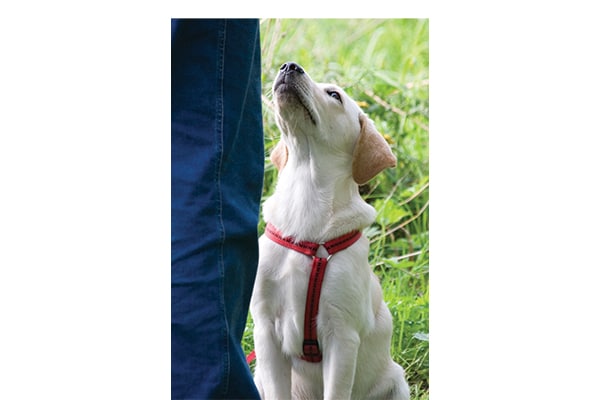
Be certain that to do your analysis when searching for the suitable coach. Images by: ©Lios | Getty Photos
When trying to find the suitable match for you and your fearful canine, search for somebody who:
- makes use of constructive rewards
- has science-based coaching
- is fluent in canine converse
- focuses on fearful canines
This kind of coach could have the expertise and information that will help you assist your canine. A veterinary behaviorist (not a normal apply veterinarian) can be an incredible selection. Though this may be on the costlier aspect, it’s price it if you happen to can’t discover an skilled and educated coach. In the US, right now, canine coaching continues to be an unregulated area, though we do have wonderful skilled organizations and certifications obtainable to trainers. The regulation doesn’t require canine trainers to observe solely coaching methods that don’t trigger hurt to canines, so do your analysis.
Thumbnail: ©Victoria Rak | Tuff Picture
In regards to the author:
Award-winning author Jill Breitner has been coaching canines since 1978. Her ardour lies in instructing folks about canine physique language. Jill created the Canine Decoder app as a technique to improve the human-dog bond by understanding them higher. You’ll discover her at play close to the ocean. Comply with her at dogdecoder.com, facebook.com/dogdecoder and on Twitter @shewhispers.




